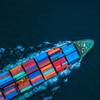DNV GL Pact with WeatherTech on Wind Turbines
DNV GL, the world’s largest resource of independent energy experts and certification body, today announced that it has joined forces with Swedish atmospheric science experts, WeatherTech.
The combined expertise of both companies will enable the development of the most advanced icing model for wind turbines available on the market, allowing customers to better predict the performance of turbines in cold climates.
In cold climates, the performance of wind turbines is significantly reduced by ice accretion, the gradual build-up of ice on the turbine blades. The impact of ice on turbine performance is a major challenge for developing and operating wind farms in cold climates, where production loss can exceed 50% during winter months, and surpass 10% over the course of a year.
WeatherTech enjoys a renowned reputation in the Nordic wind resource market and is one of the specialist companies at the forefront of cold climate issues. The partnership between DNV GL and WeatherTech will enable innovation in the renewable energy market by bringing together the considerable cold climate wind resource assessment knowledge of both companies.
Wind power in cold climates is on the rise. The forecast for the end of 2020 shows a total installed capacity of 186GW, indicating a remarkable 30% share of global forecasted wind capacity. Around 12GW of new cold climate capacity will be built each year. By comparison, the average annual growth rate for offshore wind is forecast at around 4GW, making the cold climate market nearly three times the size of offshore wind.
Therefore, improving predicted icing loss is becoming increasingly urgent. By combining WeatherTech’s advanced WICE model, which predicts losses in production due to ice accretion on wind turbine blades, with DNV GL’s unique database of production data from operating wind farms in cold climates, reliable icing loss estimates for wind projects can now be delivered. Uniquely, this tool will be applicable across the world when fully developed.
DNV GL has been assessing operational data from several cold climate wind farms located in Sweden, Norway and Finland for many years to establish a relationship between energy losses caused by icing and hub height altitude. The research, which analysed data from more than 70 meteorological masts and 30 operational wind farms across the Nordic region, has shown that altitude is the driving factor for icing losses.
Stefan Söderberg, Owner of WeatherTech, said: “The combined strengths of DNV GL and WeatherTech marks the start of a new and exciting chapter in cold climate assessment. The collaborative powers of DNV GL and WeatherTech will provide greater insight into cold climate challenges and mitigation techniques. This insight will greatly benefit an entire industry which still has unanswered questions relating to this atmospheric phenomenon.”
Prajeev Rasiah, Executive Vice President for DNV GL’s Energy business in Northern Europe, Middle East & Africa, said, “With greater numbers of wind turbines utilised around the world to meet growing electricity demands, we need to be sure that turbines can function as intended in challenging environments, including cold climates, such as Scandinavia, Northern Russia and Canada. By joining our Renewables Energy Analytics department, the WeatherTech team will bring immense knowledge of meteorology and mesoscale to our global pool of experts. It is also great to see our renewables expertise grow even further in the Stockholm office, to accompany the exponential growth of the market in Sweden.”











